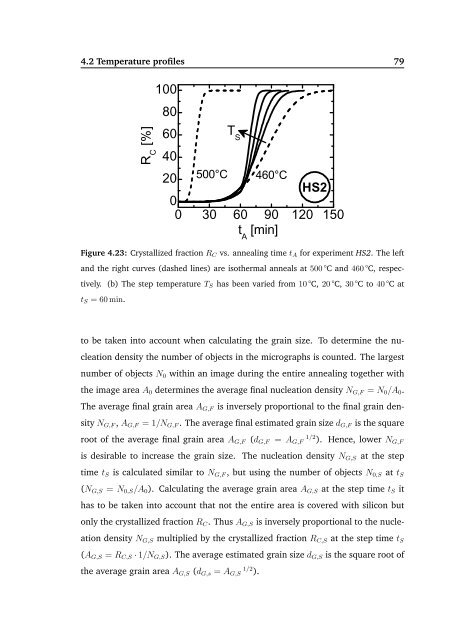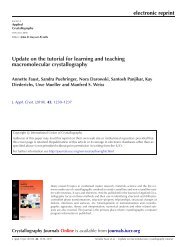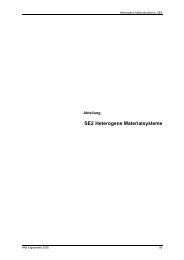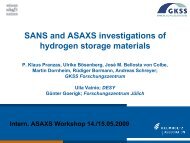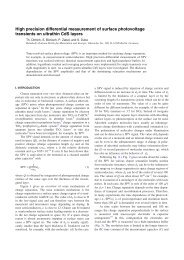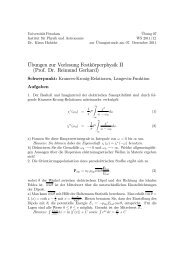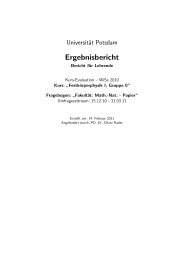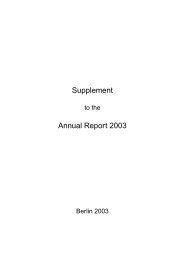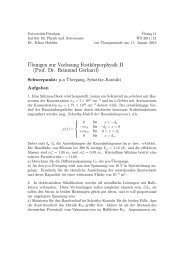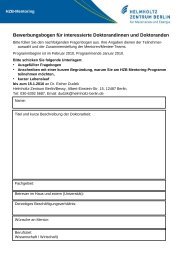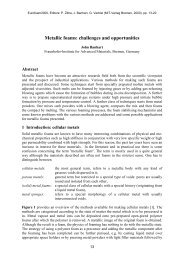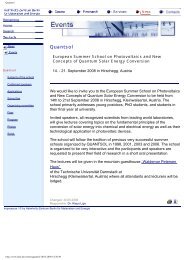(a) 100 µm - Helmholtz-Zentrum Berlin
(a) 100 µm - Helmholtz-Zentrum Berlin
(a) 100 µm - Helmholtz-Zentrum Berlin
Create successful ePaper yourself
Turn your PDF publications into a flip-book with our unique Google optimized e-Paper software.
4.2 Temperature profiles 79<br />
R C [% ]<br />
1 0 0<br />
8 0<br />
6 0<br />
4 0<br />
� �<br />
2 0<br />
0<br />
����� �����<br />
H S 2<br />
0 3 0 6 0 9 0 1 2 0 1 5 0<br />
� ������<br />
�<br />
Figure 4.23: Crystallized fraction RC vs. annealing time tA for experiment HS2. The left<br />
and the right curves (dashed lines) are isothermal anneals at 500 °C and 460 °C, respec-<br />
tively. (b) The step temperature TS has been varied from 10 °C, 20 °C, 30 °C to 40 °C at<br />
tS = 60 min.<br />
to be taken into account when calculating the grain size. To determine the nu-<br />
cleation density the number of objects in the micrographs is counted. The largest<br />
number of objects N0 within an image during the entire annealing together with<br />
the image area A0 determines the average final nucleation density NG,F = N0/A0.<br />
The average final grain area AG,F is inversely proportional to the final grain den-<br />
sity NG,F , AG,F = 1/NG,F . The average final estimated grain size dG,F is the square<br />
root of the average final grain area AG,F (dG,F = AG,F 1/2 ). Hence, lower NG,F<br />
is desirable to increase the grain size. The nucleation density NG,S at the step<br />
time tS is calculated similar to NG,F , but using the number of objects N0,S at tS<br />
(NG,S = N0,S/A0). Calculating the average grain area AG,S at the step time tS it<br />
has to be taken into account that not the entire area is covered with silicon but<br />
only the crystallized fraction RC. Thus AG,S is inversely proportional to the nucle-<br />
ation density NG,S multiplied by the crystallized fraction RC,S at the step time tS<br />
(AG,S = RC,S · 1/NG,S). The average estimated grain size dG,S is the square root of<br />
the average grain area AG,S (dG,s = AG,S 1/2 ).


